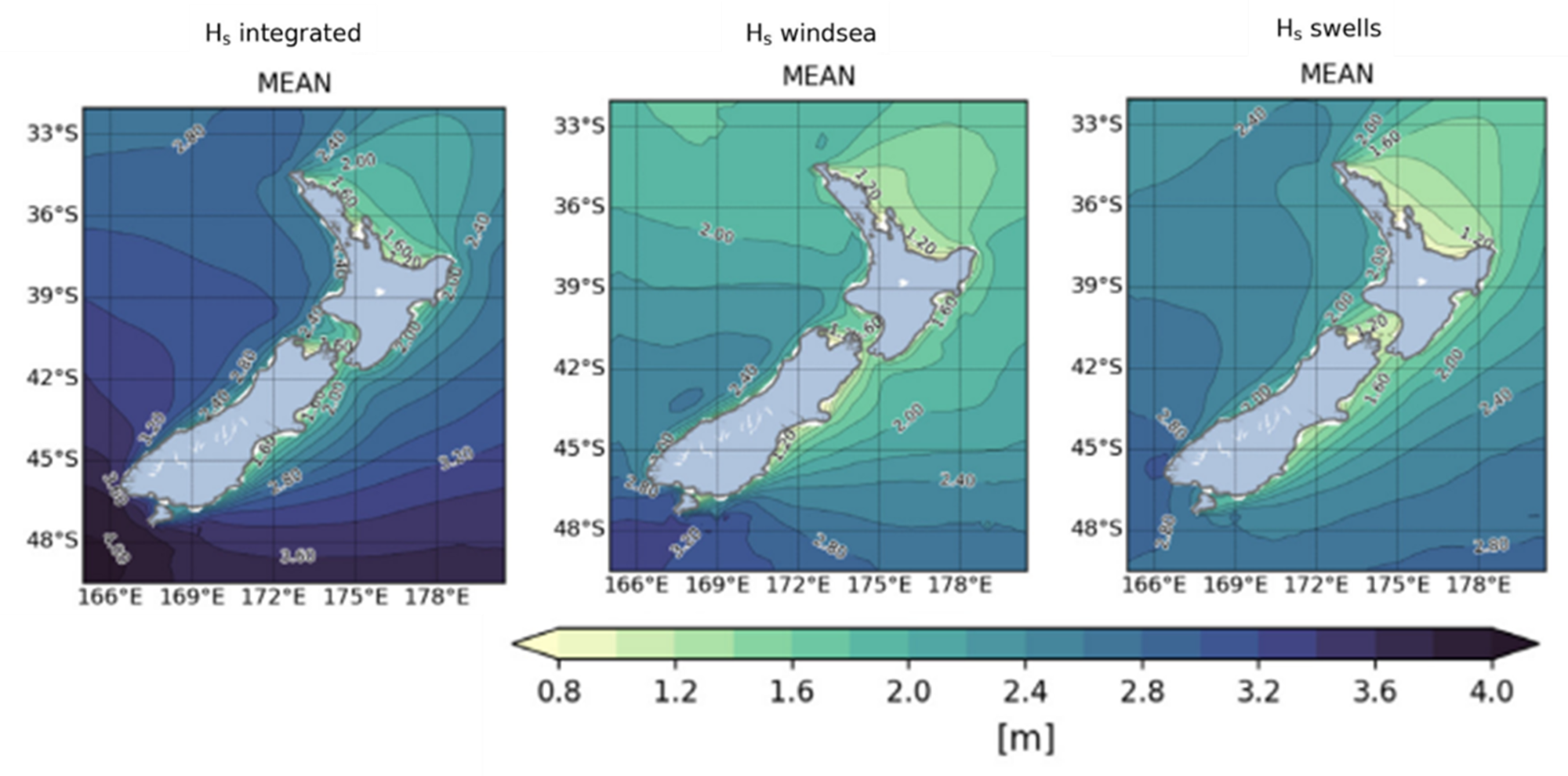New research expands the current knowledge of Aotearoa’s complex wave climate
MetOcean Solutions’ expert oceanographer Dr João Albuquerque recently published a study on wave partitioned hindcast data from New Zealand waters. Multiple wave systems with different wave heights, periods, and directions make up the "wave spectrum". Wave spectra are often separated into two wave groups by a somewhat arbitrary 8 second period split (the time it takes for two successive wave crests to pass an object). The two groups are termed "wind-sea" (waves with periods smaller than 8 seconds) and "swell" (waves with periods greater than 8 seconds).
The main difference between these two wave groups is that swells are generated by high wind events some distance away. In contrast, sea waves are a product of the local winds and therefore, die down quickly when the wind drops. The local sea state is therefore made up of simultaneous wind-seas and swell(s) from different origins, sizes, periods and directions. When swell makes up the most significant component of the wave spectra (higher average wave period), you are likely to see those beautiful clean waves in the lineup that surfers dream about (see example in the picture below). At the same time, wind-seas often cause the sea-state to be choppy.
Swell interacting with the points in Raglan, New Zealand (Photo: Brett Beamsley).
Until now, published studies have described the New Zealand wave climate using the bulk parameters such as significant wave height, period, and direction, which do not consider the separate wave groups. However, New Zealand's geographical situation exposes it to multiple wave generation basins including the Indian, Southern and Pacific Oceans, and the Tasman Sea. These basins interfere with the local wave climate in diverse ways. "The wave climate of New Zealand is rich and complex, and it can be misleading to only assess bulk wave parameters," explains João. "Just consider the Cook Strait, which eventually adds another wave component along the west or east coasts due to its wind channeling effects. Another example is the difference between the wave height spatial variability of these systems. Wind-seas wave heights are large in the south, decreasing quickly towards the north of New Zealand, whilst swell waves preserve their wave height as they propagate through the same area", adds João.
Longterm averages (20 years) of significant wave heights (Hs) of integrated wave spectrum (left plot), wind-sea (middle plot) and swell (right plot). Figure adapted from Albuquerque et al. 2021.
The project was part of João's PhD which emerged from the necessity of a comprehensive, validated, published and publicly available wave database for research in New Zealand. The study was part of a larger project which João completed at the University of Auckland before joining the MetOcean Solutions’ team. The project investigated how climate change influences New Zealand's wave climate, and the associated coastal hazards.
Our world-leading team of wave scientists at MetOcean Solutions also produces a vast number of databases, more than we can publish. However, hindcast summary statistics are freely available for download via MetOceanView and time series can be accessed upon request. We also produce high-resolution SWAN models that provide wave partitioned forecasts. Please contact our team if you are interested in learning more, enquiries@metocean.co.nz.
You can find João’s full article here, and read the abstract below:



